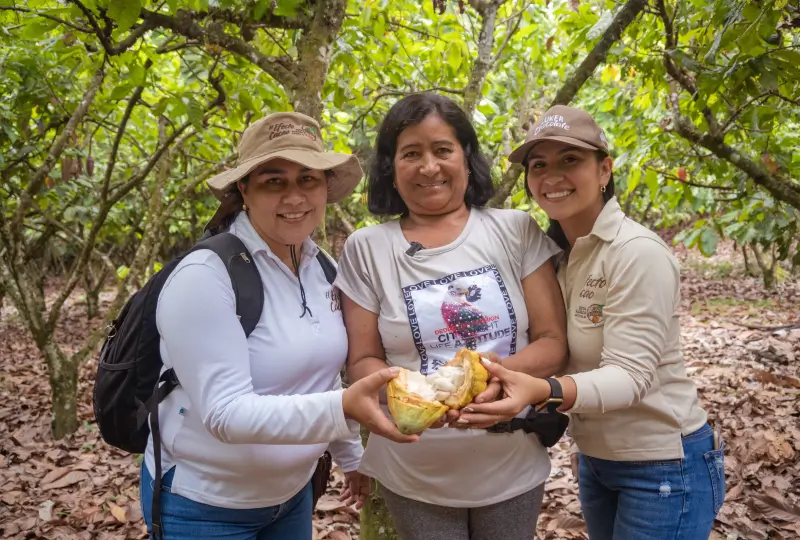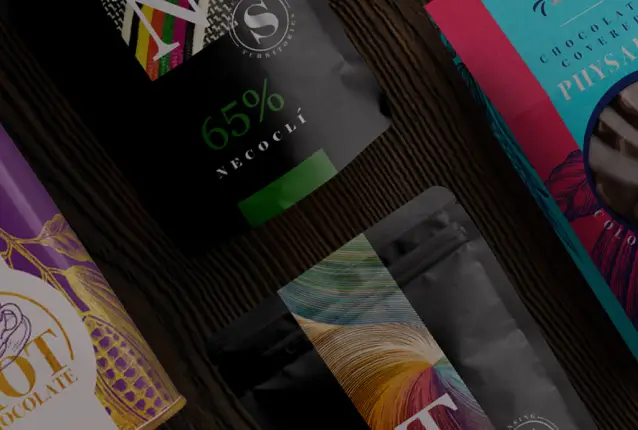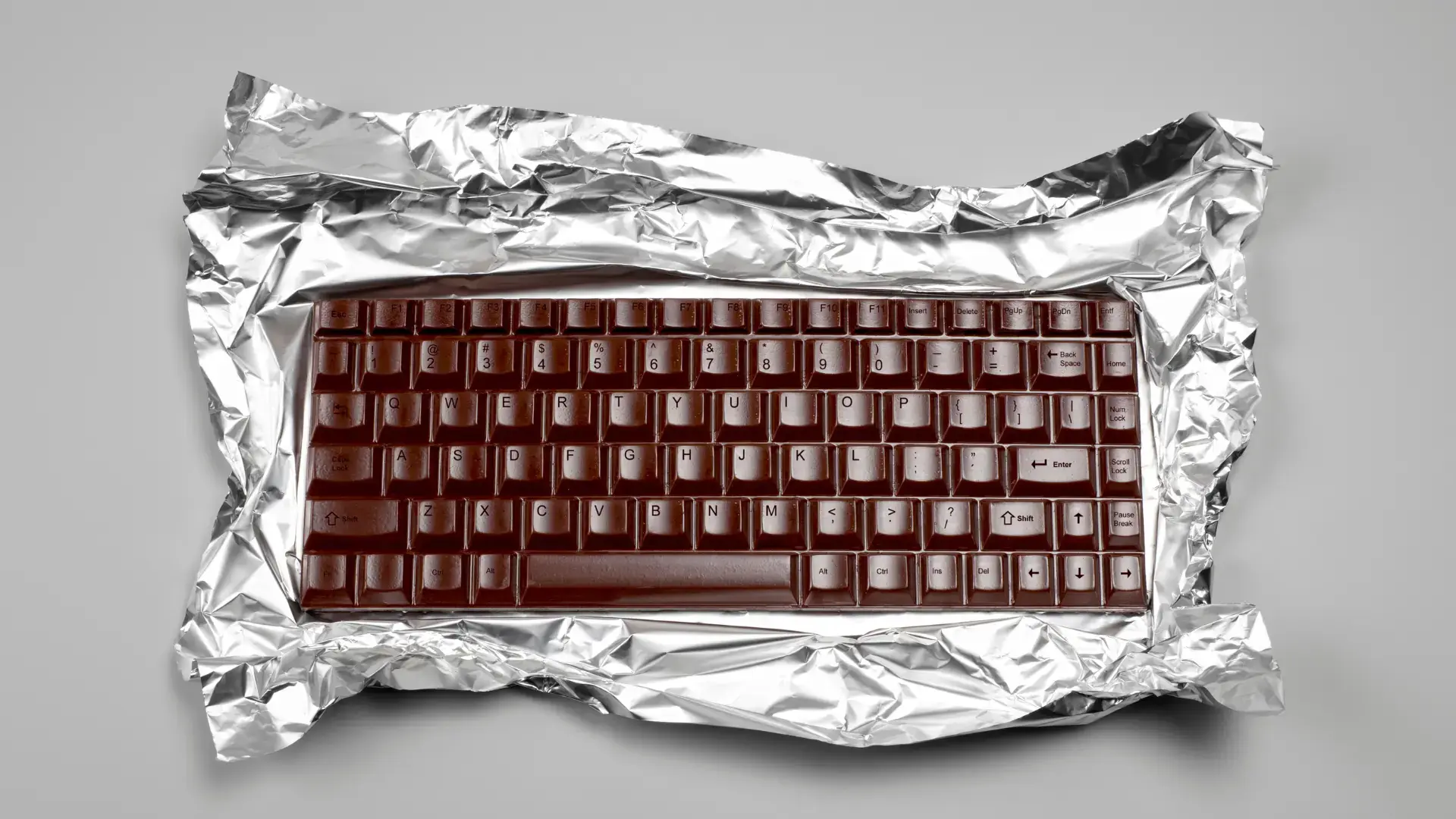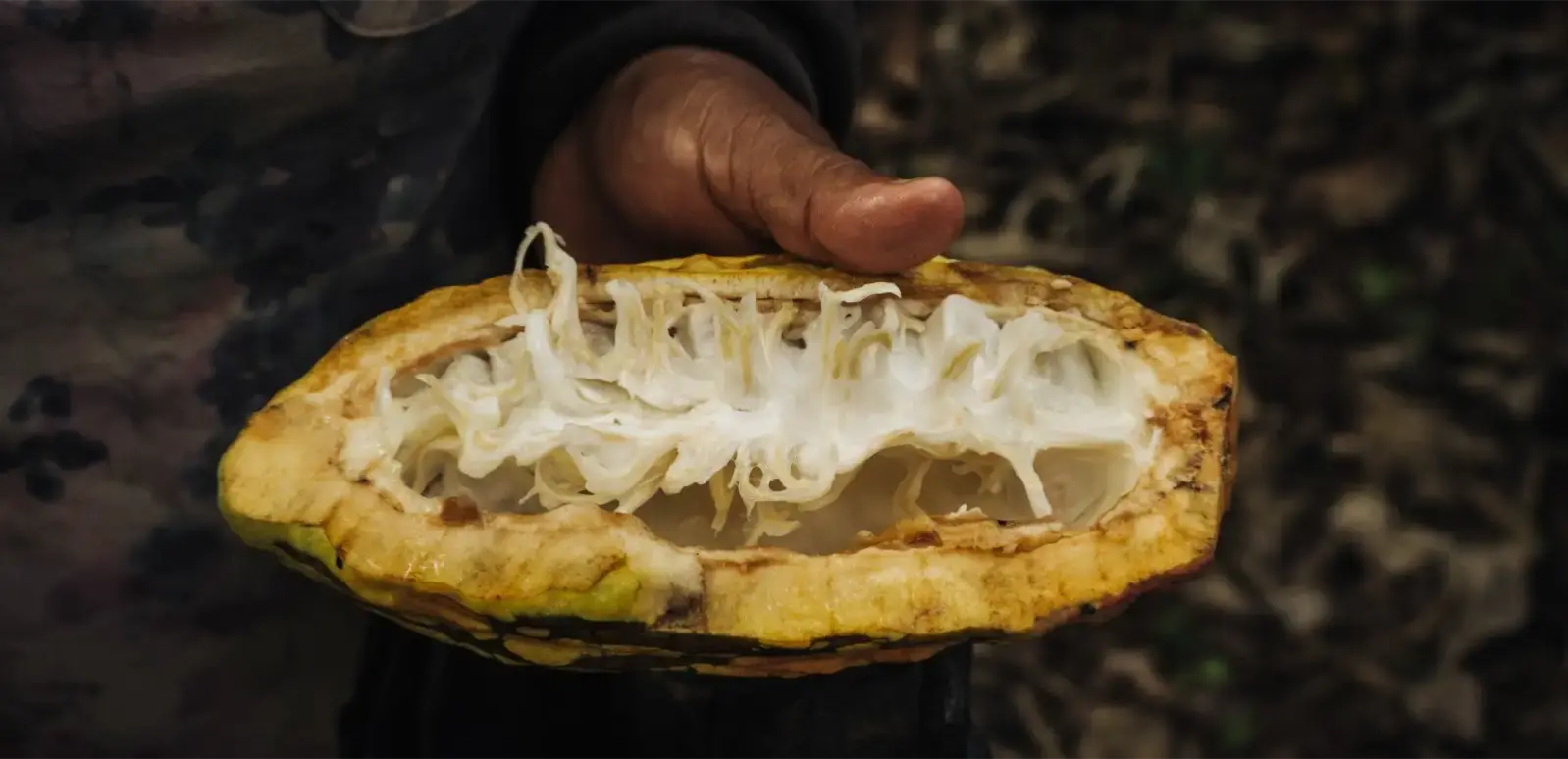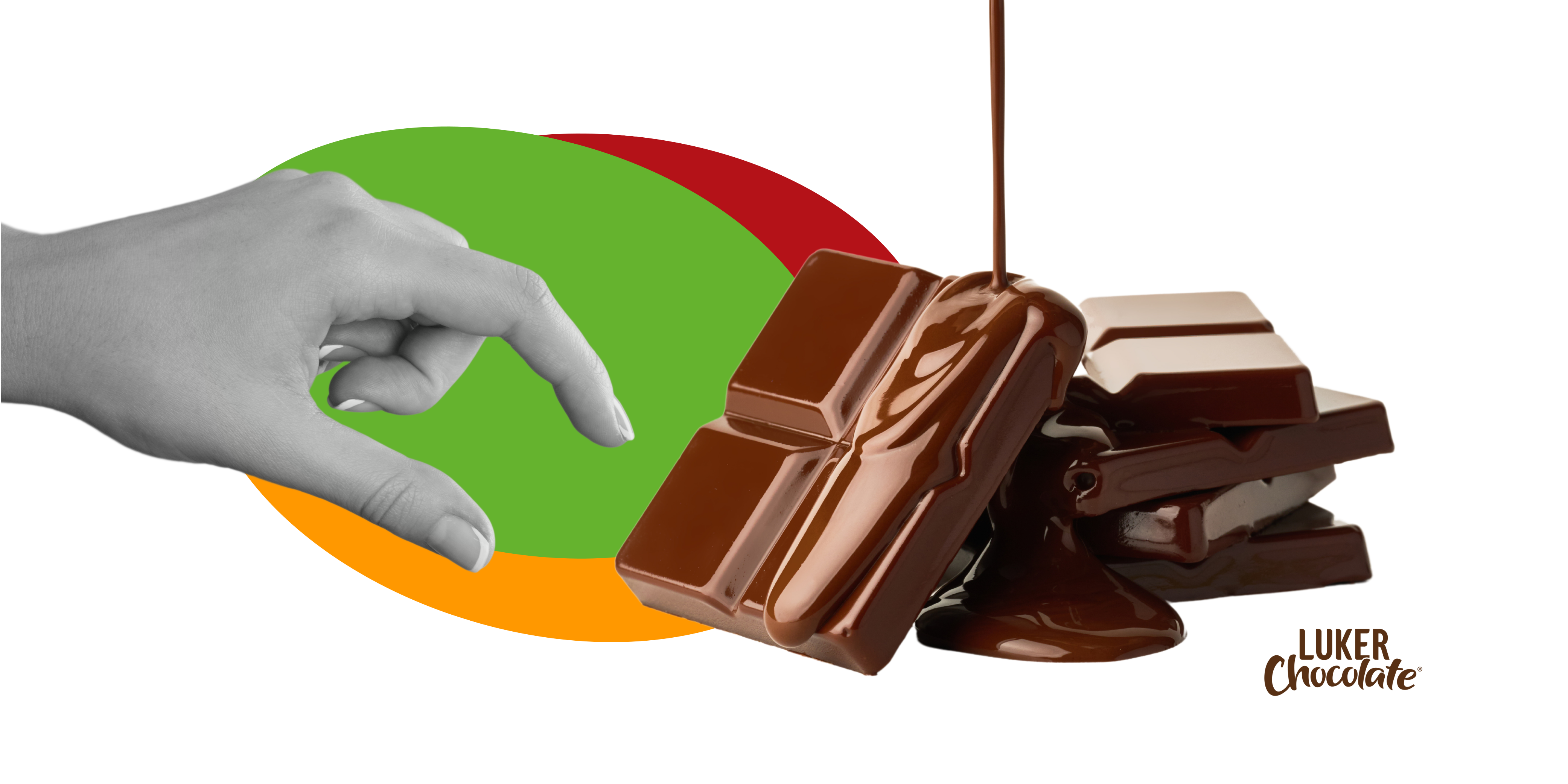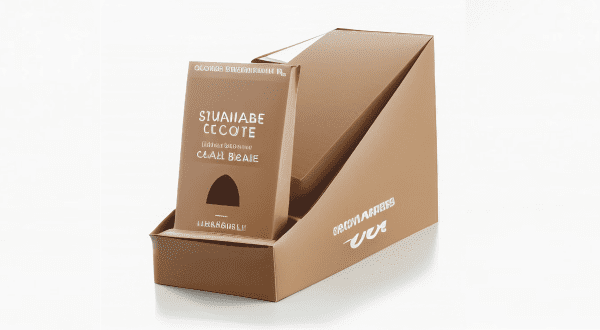The packaging of any product is its first point of contact with potential buyers.
The packaging serves as a marketing tool that speaks volumes about the quality of the products and the brand that sells them. Packaging types and materials play a crucial role in the New Product Development (NPD) processes or product management for companies that own a brand in the confectionery and snack segments.
Join us as we explore the crucial role sustainable chocolate packaging plays in creating a positive impression, communicating quality, and paving the way for a greener future.
As consumers become more aware of the importance of sustainable packaging, businesses need to keep up with packaging trends and switch to eco-friendly packaging options.
In this blog post, we will explore the various packaging options and highlight sustainable alternatives like compostable packaging.
Consumers are more aware than ever of the environmental impact of their choices and are actively seeking products that align with their values. This heightened awareness has put significant pressure on chocolate, candy & snacks businesses and brands to provide sustainable packaging options, reflecting the growing desire for greener practices.

Snack Packaging

Confectionery Packaging

Hot Chocolate Tin and Packages

Packaging For Bakery Products

Consequently, packaging significantly influences consumer perceptions of chocolate products. A well-designed package demonstrates quality, authenticity, and a brand's commitment to its values.
This surge in conscious consumption has led to an escalating demand for sustainable chocolate packaging in the industry, projected to be valued at an estimated USD 533 billion by 2033 (2023 Future Market Insights). This projection underscores how consumer preferences and industry practices are converging toward a more sustainable future.
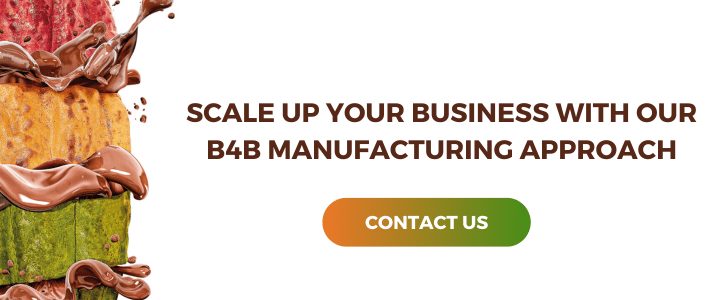
In light of the growing trend towards environmentally conscious practices and to truly grasp the role packaging plays in the chocolate industry, we chatted with Carolina Álvarez, Head of Packaging at Luker Chocolate.
Packaging is often the first thing consumers see when they encounter a new chocolate product, and they are passionate about finding innovative ways to reduce the environmental impact of chocolate packaging.
What type of packaging is used for chocolate, and what are the key considerations?

Chocolate is a delicate product that requires protection from external factors, such as moisture and temperature.
"Packaging is fundamental in preserving our product's features from the moment it leaves our production lines. It retains the original taste, texture, and aroma throughout its shelf life, ensuring we deliver the highest quality to the customers. Packaging isn't merely a container; it's a promise of unaltered quality.."
The choice of packaging material depends on product type, shelf life, transportation, and storage requirements. Plastic, foil, paper, and metal are the most common materials for packaging snacks and confectionery items.
Each material has its advantages and disadvantages.
For instance, plastic is lightweight and durable but not readily biodegradable, contributing to increasing environmental issues.
Paper is biodegradable and eco-friendly, but it does not offer the same level of protection as plastic.
Aluminum foil is resistant to moisture and temperature but tends to be costly.
Metal containers offer the best level of protection but are also the heaviest and most expensive option.
Considering these factors will help packaging developers preserve quality throughout a product’s shelf life. However, packaging developers must also consider the environmental impact of their choices by reducing waste and using eco-friendly materials.

Green Packaging: Complying with Legal Standards in Chocolate
About 70% of chocolate packaging is made from plastic, contributing to the global plastic pollution problem, as mentioned in The State of the World's Plastic Pollution Report, 2022.
According to the OECD Global Plastics Outlook 2022, only 9% of plastic packaging is recycled globally, highlighting the urgency for more sustainable packaging solutions. Yet, for challenger brands and chocolate companies, one of the critical challenges in developing sustainable chocolate packaging is finding a balance between protecting a product's integrity and being environmentally responsible.
As consumers search for attractive and eco-friendly packaging, packaging developers face the challenge of finding genuine, region-specific, sustainable solutions that stand out on shelves (Get App). A one-size-fits-all approach won't cut it due to the variations in local regulations, consumer habits, and recycling capabilities and the product.
Consider the Legal Requirements of Each Country
While conveying a specific look and feel, packaging for chocolate products must also adhere to specific legal requirements, which may vary by region or country. Proper ingredient labeling, allergen warnings, nutritional information, and certifications are essential components to ensure consumer safety and compliance.
Depending on the country, manufacturers may even have to provide additional information, like instructions for disposal. Packaging designers must remain aware of all legal requirements to create a product label that meets them.
| Local regulations, consumer habits, and local recyclability capacity must be considered for sustainable packaging. |
Positively, however, emerging sustainable packaging materials that are being used for chocolate products are becoming more common and include biodegradable plastics made from renewable resources such as cornstarch or sugarcane, paper-based packaging often lined with a thin layer of plastic to provide moisture and oxygen barrier, and metalized paper made from paper that has been coated with a thin layer of aluminum.
Innovative packaging techniques like barrier films, seals, and proper storage conditions can also significantly extend the shelf life of chocolate products. A longer shelf life provides consumers with added comfort and confidence in their purchase.
Why is sustainable packaging important?
Sustainable packaging is gaining popularity and prominence in the snacks and confectionery industry as consumers become more environmentally aware. Eco-friendly packaging options like compostables, reusable, recyclable, and biodegradables are becoming more accessible and affordable. Sustainable packaging benefits the environment and helps businesses reduce their carbon footprint, save costs, and attract and retain environmentally conscious customers.
What are the sustainable packaging options available?
One of the sustainable packaging options that have gained popularity in recent times is compostable packaging. Compostables are from plant-based materials like cornstarch, sugarcane, and bamboo fiber. These materials are biodegradable and decompose into organic matter when disposed of properly. Other sustainable packaging options include paper packaging, biodegradable plastics, and plant-based materials. Companies looking to switch to sustainable packaging options should consider the environmental impact, costs, and compatibility with their products.
The future of sustainable chocolate packaging
Our company is committed to promoting sustainability in the chocolate industry and focuses on turnkey chocolate manufacturing services that cater to the perfect packaging for a greener future.
While the chocolate industry is responsible for about 2.6% of global greenhouse gas emissions, Luker Chocolate adopts several practices to minimize our environmental impact.
In packaging, we use mono-material plastics, reducing plastic usage, incorporating compostable materials, and minimizing ink usage in artwork to enhance recyclability potential.
“if we cannot work with mono–material plastics, we try to reduce the amount of plastic in the packaging to lower the environmental impact of the packaging disposal process,”
Overall, we envision the future of chocolate packaging being rooted in sustainability. The industry focuses on developing targeted and innovative solutions tailored to each region's unique sustainability needs.
Packaging has evolved from a mere protective covering to a vital tool for chocolate brands to make a lasting impact on consumers. The chocolate industry must embrace eco-friendly packaging practices to pursue a sweeter and more sustainable future.
Some of the innovative and sustainable packaging solutions that are being developed by businesses across the chocolate industry include:
- Edible packaging is made from materials that can be eaten, such as sugar, gum, or vegetable oil. This type of packaging is entirely compostable and leaves no waste behind.
- Biodegradable coatings transform traditional materials into eco-friendly ones, allowing them to break down over time.
- By designing containers for multiple uses or repurposing discarded materials, chocolate makers give the packaging a new lease of life, substantially reducing waste generation.
- Forest-friendly and fair trade packaging draws from responsibly managed forests and fair labor practices, respectively, all while protecting the world.
- Traceable, carbon neutral, and zero waste packaging to ensure that chocolate is produced and packaged in a way that minimizes environmental impact.
By prioritizing these more sustainable solutions and communicating these efforts to consumers, brands can tap into the emotional side of their audience, protect the environment, and set a delicious example for the entire confectionery world.
The future is bright for eco-friendly packaging solutions that uphold product quality. Find sustainable packaging options to minimize environmental impact while maintaining high product standards.
Packaging types and materials are fundamental in NPD processes or product management for companies that own a brand in the confectionery and snack segments. Sustainable packaging is crucial for businesses to keep up with packaging trends and promote environmental awareness.
Companies looking to switch to sustainable packaging options should consider the environmental impact, costs, and compatibility with their products.
Sustainable business practices are essential to reduce carbon footprint and promote environmental consciousness.














